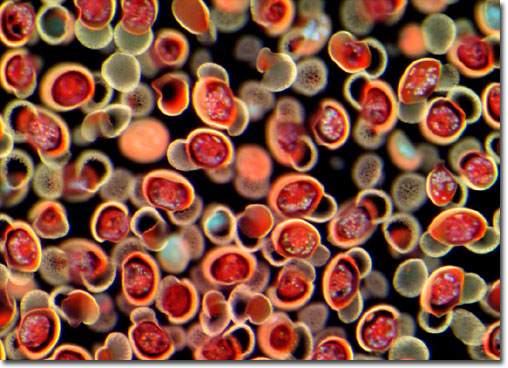Fluorescence Digital Image Gallery
Pine Tree Pollen
|
The male pinecone, or microstrobilus, produces the pollen, or male gametes. The cones are covered with fertile scales (modified leaves), each of which bears two pollen sacs. In the spring or early summer, the pollen sacs release their pollen grains, each of which has two air bladders for wind dispersal. During pollination, the pollen grains sift among the scales of the female cone and land directly on the ovules, or unfertilized seeds. Over a two to three year period after fertilization, the woody female pinecone develops. In some species, the cones open at maturity and the seeds are released. In others the cones remain closed for several years until opened by rotting, by food-seeking animals, or by fire. In some pines the scale bearing the nutlike seed may be expanded to form a wing for airborne dispersal. View a second image of pine pollen. |
© 1995-2025 by Michael W. Davidson and The Florida State University. All Rights Reserved. No images, graphics, software, scripts, or applets may be reproduced or used in any manner without permission from the copyright holders. Use of this website means you agree to all of the Legal Terms and Conditions set forth by the owners.
This website is maintained by our
|
